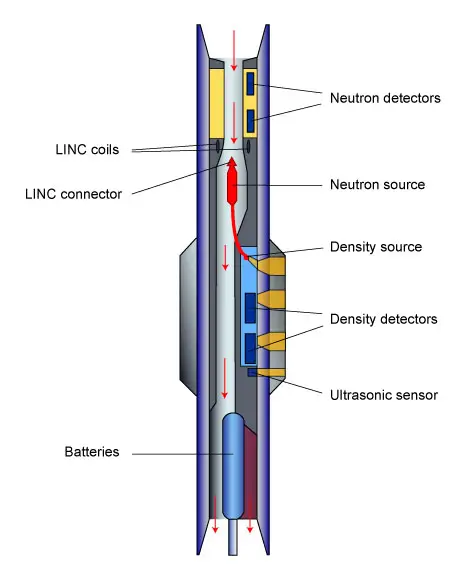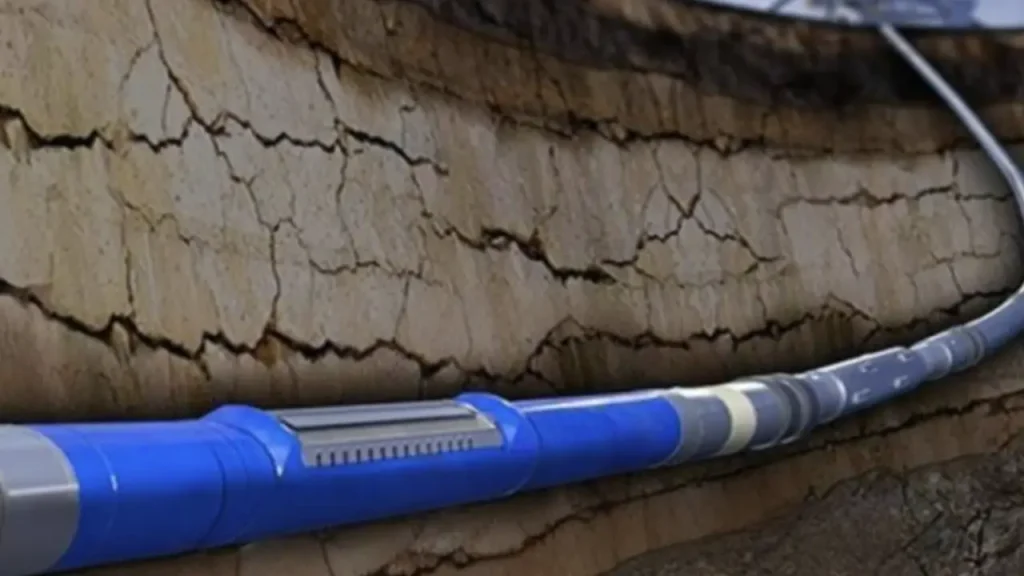Logging While Drilling (LWD) has revolutionized the oil and gas industry, offering unprecedented real-time insights into subsurface formations. This cutting-edge technology integrates data acquisition tools directly into the drill string, allowing for immediate geological evaluation as the well is being drilled.
Unlike traditional wireline logging, LWD provides critical information instantaneously, enabling quicker, more informed decisions about drilling operations, well placement, and reservoir characterization. This blog post will delve into what LWD entails and explore its diverse applications that enhance efficiency and reduce risks in modern drilling.
What is Logging While Drilling?
Logging While Drilling (LWD) is an advanced technology in the oil and gas industry that involves integrating specialized well logging tools directly into the drill string.
These LWD tools acquire real-time data about the geological formations being penetrated as the drilling operation progresses. This allows engineers and geologists to gather critical information such as formation resistivity, density, porosity, and natural gamma ray readings almost instantaneously, enabling immediate decisions regarding well trajectory adjustments, well placement, and overall drilling efficiency, often referred to as “geosteering.”
LWD significantly reduces the need for conventional wireline logging, especially in challenging wellbores like highly deviated or horizontal wells where traditional methods are difficult or impossible.
LWD Logging While Drilling Working Principle

Logging While Drilling (LWD) operates on the principle of acquiring real-time downhole measurements through specialized sensors integrated into the bottom hole assembly (BHA) of the drill string.
As the drill bit penetrates new rock formations, these LWD tools continuously measure various petrophysical properties such as gamma ray, resistivity, density, and neutron porosity. The data collected by the sensors is then processed and transmitted to the surface, typically using mud pulse telemetry, electromagnetic telemetry, or wired drill pipe systems.
This allows geoscientists and drilling engineers to immediately analyze the formation characteristics, adjust drilling parameters, and make informed decisions about the well path in real-time.
The working principle involves several key aspects:
- Sensor Integration: LWD tools, equipped with a suite of sensors (e.g., gamma ray, resistivity arrays, nuclear sources and detectors for density/neutron), are strategically placed within the drill collar or drill pipe sections of the BHA, close to the drill bit.
- Measurement Acquisition: As the BHA rotates and moves through the formation, the sensors continuously interact with the surrounding rock and fluids, generating raw data signals.
- Downhole Processing: Microprocessors within the LWD tools process the raw data into interpretable petrophysical measurements.
- Data Transmission: The processed data is then encoded and transmitted to the surface. The most common method is mud pulse telemetry, where pressure pulses are created in the drilling fluid column and detected by surface sensors. Other methods include electromagnetic signals or high-speed data transmission through wired drill pipe.
- Surface Reception and Interpretation: At the surface, the transmitted data is received, decoded, and displayed in real-time, allowing geologists and engineers to interpret the subsurface conditions, identify pay zones, and optimize drilling operations.
Logging While Drilling Tools
Logging While Drilling (LWD) tools are sophisticated instruments designed to acquire crucial subsurface data in real-time during drilling operations. These tools are integrated directly into the drill string, providing immediate insights into geological formations and wellbore conditions.

Gamma Ray Drilling Tools
Gamma ray drilling tools measure the natural radioactivity of formations, which is primarily emitted by potassium, thorium, and uranium. This measurement helps in identifying lithology (rock type), distinguishing between shale (high gamma ray) and sandstones/carbonates (low gamma ray), and correlating geological layers across different wells.
Resistivity Drilling Tools
Resistivity drilling tools measure the electrical resistivity of the formation, which is influenced by the presence of hydrocarbons, water, and rock matrix. Different types of resistivity tools (e.g., shallow, medium, deep) provide varying depths of investigation, helping to identify hydrocarbon-bearing zones and determine fluid saturation.
Density and Neutron Porosity Drilling Tools
Density drilling tools emit gamma rays into the formation and measure the scattered gamma rays to determine the bulk density of the rock, which is related to its porosity and mineralogy. Neutron porosity tools emit neutrons and measure the hydrogen content, providing an indication of the formation’s porosity, especially useful in identifying fluid-filled pores.
Sonic Drilling Tools
Sonic drilling tools measure the time it takes for acoustic waves to travel through the formation. This data provides information on rock mechanical properties, such as compressional and shear wave velocities, which are crucial for wellbore stability analysis, seismic correlation, and determining rock strength.
Imaging Drilling Tools
Imaging drilling tools provide high-resolution images of the borehole wall, revealing detailed geological features like bedding, fractures, and faults. These images, derived from measurements like resistivity or density, help in understanding the structural geology of the reservoir and optimizing well placement.
Why Choose Logging While Drilling?
Choosing Logging While Drilling (LWD) offers significant advantages over traditional wireline logging, primarily due to its ability to provide real-time data during the drilling process. This immediate access to critical formation information allows for rapid decision-making, which is crucial for optimizing well placement, mitigating drilling risks, and maximizing reservoir exploitation.
LWD is particularly beneficial in complex drilling environments, such as highly deviated or horizontal wells, where conventional logging methods can be challenging or impossible to deploy effectively. By integrating data acquisition with the drilling operation, LWD streamlines the workflow, reduces non-productive time, and ultimately contributes to more efficient and cost-effective drilling campaigns.
Here are some key benefits that help you choose LWD include:
- Real-time Data Acquisition: Provides immediate access to formation data, allowing for on-the-fly geological evaluation and decision-making.
- Enhanced Geosteering: Enables precise steering of the wellbore to stay within target pay zones, maximizing reservoir contact and hydrocarbon recovery.
- Reduced Risk and NPT (Non-Productive Time): Real-time insights help identify and mitigate potential drilling hazards, such as abnormal pressures or unstable formations, reducing costly delays.
- Improved Wellbore Stability: Data on rock mechanics allows for better understanding of wellbore integrity, leading to more stable and safer drilling.
- Early Formation Evaluation: Allows for quicker identification of hydrocarbon-bearing zones, leading to faster development decisions.
- Access to Challenging Wellbores: Can acquire data in highly deviated, horizontal, or extended-reach wells where wireline logging is difficult or infeasible.
- Elimination of Dedicated Logging Runs: Integrates logging with drilling, reducing the need for separate wireline runs, thus saving rig time and associated costs.
Conclusion
In conclusion, Logging While Drilling (LWD) stands as a cornerstone of modern drilling, transforming how we understand and exploit subsurface resources. Its ability to provide real-time data empowers operators with invaluable insights, leading to optimized well paths, enhanced safety, and significant cost savings.
The continuous advancements in LWD technology promise even greater precision and efficiency for future drilling endeavors. By bridging the gap between drilling and data acquisition, LWD remains indispensable for maximizing reservoir potential.
For those looking to equip their operations with high-quality LWD tools, remember you can get wholesale logging while drilling tools from our Sinodrills. Contact us to learn more about our comprehensive range of LWD solutions designed to meet your specific drilling needs.


